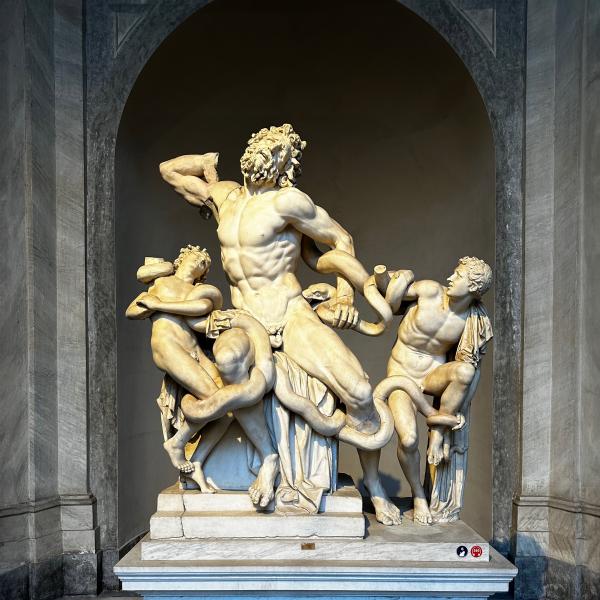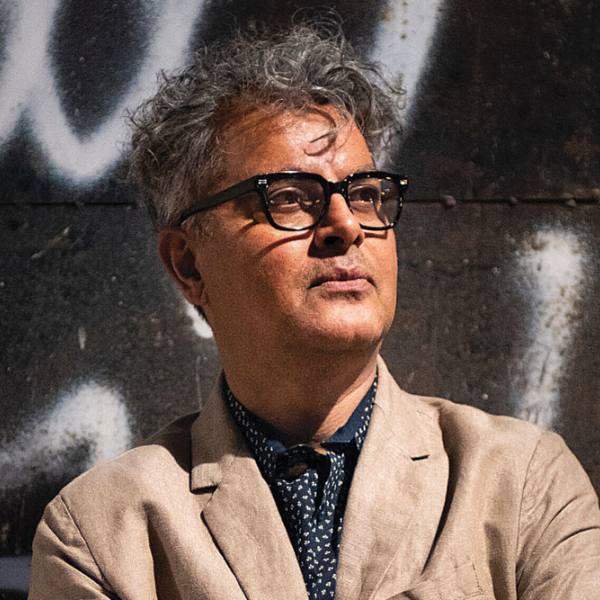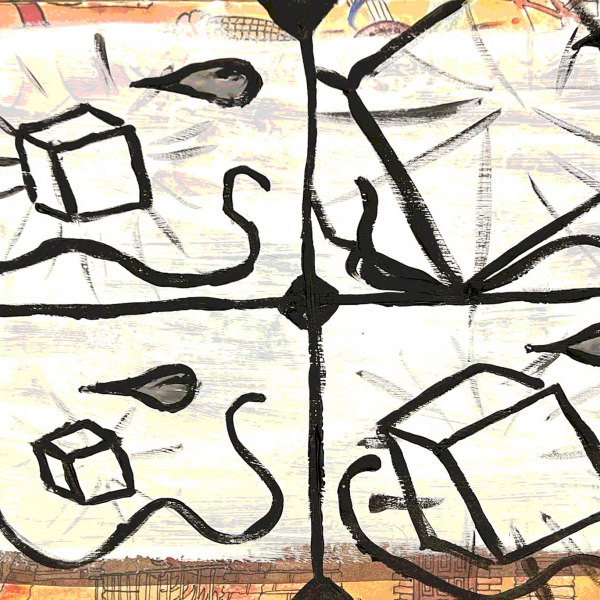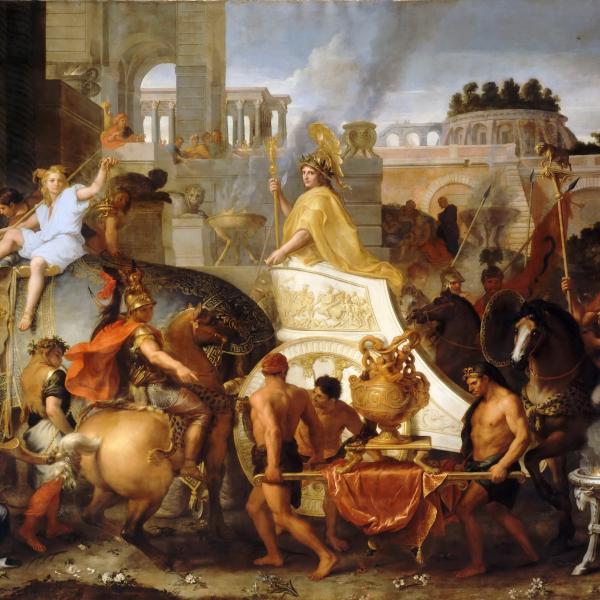By Caleb Boyd
Graduate Student, Department of Music
True to its title, "Sonic Visions," an exciting, one-night event, features a jazz trio performing improvised music to a selection of short experimental films from around the world. The performance will showcase two St. Louis musicians, saxophonist Joel Vanderheyden and bassist Paul Steinbeck, along with a Chicago-born, New York–based icon, percussionist Thurman Barker. Films by Stan Brakhage, Walter Ruttmann and Tomonari Nishikawa will be shown on rarely screened 35-millimeter film prints. "Sonic Visions" will combine spontaneous and progressive sounds with rich and vibrant images for a highly energetic, one-of-a-kind intermedia experience.
The Films
Films are usually designated as “experimental” or “avant-garde” when their sound and visual construction counters commercial Hollywood conventions. Many experimental films eschew the narrative and clear dialogue of the Hollywood film to emphasize the primacy of the visual element. The films chosen for "Sonic Visions" exhibit fascinating abstract animation, mesmerizing imagery and interesting exposure techniques.
"Sonic Visions: Jazz and Improvised Music to Avant-Garde Films"
Friday, April 8, 7 pm
Brown Hall Auditorium
Free and open to the public
FILMS
Stan Brakhage, The Dante Quartet (1987) and Interpolations (1992);
Walter Ruttmann, Lichtspiel: Opus 1-4 (1921–25)
Tomonari Nishikawa, sound of a million insects, light of a thousand stars (2014)
PERFORMERS
Thurman Barker, percussion
Joel Vanderheyden, saxophone
Paul Steinbeck, bass
Along with the works of Hans Richter and Viking Eggeling, the films of Walter Ruttmann (1887–1941) are the oldest known abstract motion pictures available to us. Prior to his filmic experiments, he had worked as a graphic designer. As an artist in interwar Germany, Ruttmann understood the new medium of film as an extension of painting but with the added element of time. In his essay “Painting with the Medium of Time” (1919) he explained that, unlike the still painting, the moving picture redirected visual attention to the temporal development of curves rather than strict points on a canvas. Consequently, many of his early films appropriate the lines and geometric shapes of constructivist graphic design popular at the time and set these basic figures into graceful and dancelike motion. The four installments of his Lichtspiel series, the first fully animated German films, earned him wide acclaim and commercial success. Ruttmann laboriously applied oil paint to glass juxtaposed with geometric paper cutouts. Color plays a dramatic role, particularly in Opus 4, which begins black and white, followed by an extended blue episode and a conclusion in bright red.
The interplay of color also affords an exciting visual spectacle in the abstract films of Stan Brakhage (1922–2003). Born in Kansas City, Brakhage approached his films as “adventures of perception,” which challenge a viewer’s conditioned perspective and visual logic. He believed the great power of cinema lay in its ability to offer completely unique visual experiences, allowing the viewer to see with the unblemished infant’s eye. Many of his experiments combine photographic imagery with obstructions, marks and paint applied directly to the film strip. These abstract films include Mothlight (1963), where he pasted dead moths on the filmstrip, and the nine-second Eye Myth (1967). For the 12-minute Interpolations (1992), the longest hand-colored film he created, he finger painted on the celluloid. He purposefully burned portions of The Dante Quartet strip and even spit on the lens to create an impressionistic effect.
Like Brakhage, Tomonari Nishikawa also likes to manipulate photographic images. His experimental techniques include superimposition and masking during film exposure. For sound of a million insects, light of a thousand stars, he buried 100 feet of negative film underneath a pile of leaves near the Fukushima Daiichi Nuclear Power Plant, which suffered major damage and erupted radiation after the 2011 Tohoku earthquake and tsunami. As the film developed underneath the foliage, it was also exposed to lingering radiation. Many of his other films feature urban environments. Market Street (2005) a five-minute view of the main thoroughfare in San Francisco, won the Film Award at the Experimental Film and Video Festival in Seoul, South Korea. He currently serves as assistant professor of cinema at Binghamton University.
The Music
In the silent film era, pianists and theater orchestras supplied live sound, usually characteristic music or stereotypes drawn from opera and Romantic symphony that either paralleled the onscreen narrative or remained subjugated to it. By contrast, the films in Friday’s event jettison narrative convention, and the jazz trio will provide an unscored and unscripted performance, a one-of-a-kind experience that highlights interaction of avant-garde image and avant-garde sound.
 Thurman Barker serves as associate professor of jazz studies at Bard College in Annandale-on-Hudson, New York. A professional drummer since the age of 16, he has played backup for musical stars as diverse as Billy Eckstine, Marvin Gaye and Bette Midler, and he has recorded with avant-garde jazz artists such as Muhal Richard Abrams, Anthony Braxton and Cecil Taylor. As a house drummer at Chicago’s Shubert Theatre, he performed in productions of Ain’t Misbehavin’, Bubbling Brown Sugar and Grease, among many others.
Thurman Barker serves as associate professor of jazz studies at Bard College in Annandale-on-Hudson, New York. A professional drummer since the age of 16, he has played backup for musical stars as diverse as Billy Eckstine, Marvin Gaye and Bette Midler, and he has recorded with avant-garde jazz artists such as Muhal Richard Abrams, Anthony Braxton and Cecil Taylor. As a house drummer at Chicago’s Shubert Theatre, he performed in productions of Ain’t Misbehavin’, Bubbling Brown Sugar and Grease, among many others.
Saxophonist Joel Vanderheyden is an associate professor of music and director of jazz at Jefferson College in Hillsboro, Mo. He has appeared on festival, radio, jazz club and concert-hall stages across the United States and internationally. A member of the St. Louis Jazz Orchestra and the Missouri Saxophone Quartet, he has also performed with Strings of Arda, a pocket group of the St. Louis Symphony, and the electro-jazz group Koplant No, which fuses jazz improvisation with electronica, progressive rock and hip hop.
Bassist Paul Steinbeck is an associate professor of music theory at Washington University in St. Louis. His research focuses on improvisation and multimedia performance. His book Message to Our Folks, a history of the Art Ensemble of Chicago, is due out later this year from the University of Chicago Press.
Barker and Steinbeck have been collaborating since 2012. Vanderheyden is a new addition to the group. Friday evening’s multimedia event will be the first time this musical trio will offer improvisational accompaniment to film projection.
Following Friday’s hour-long performance, the trio will answer questions about their approaches to improvisation and multimedia performance. Reception to follow.




